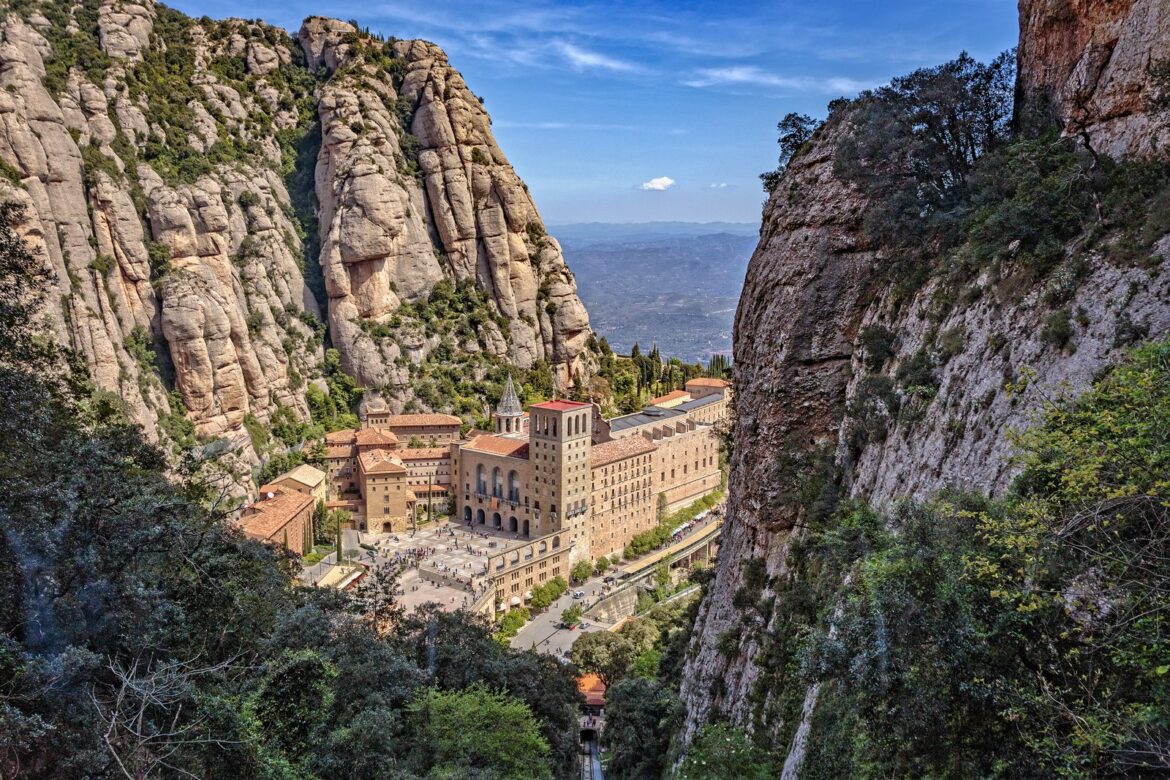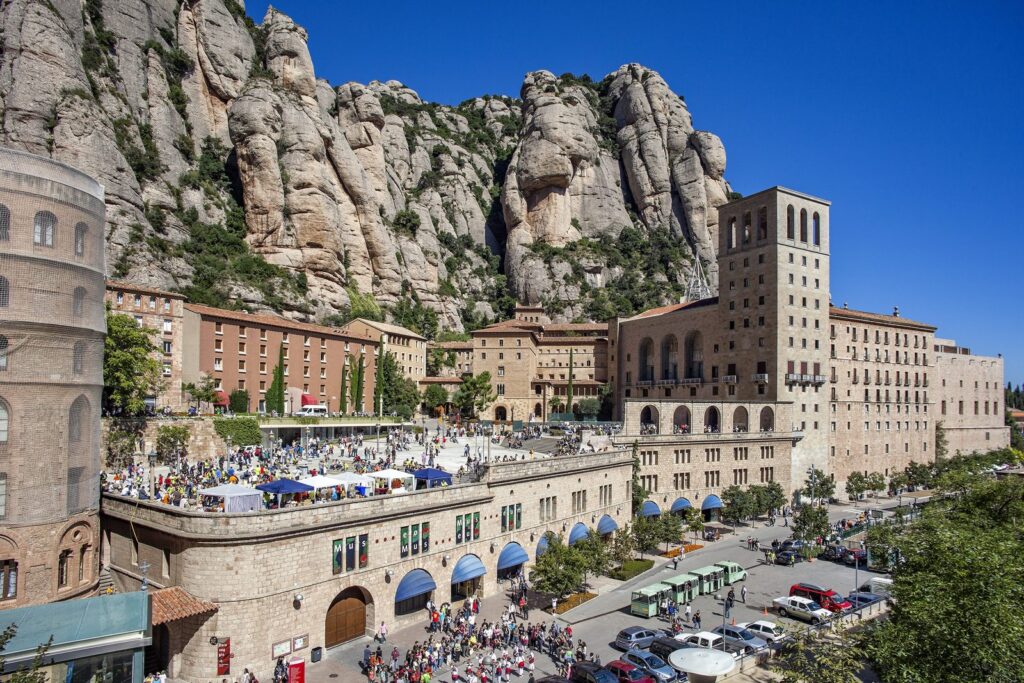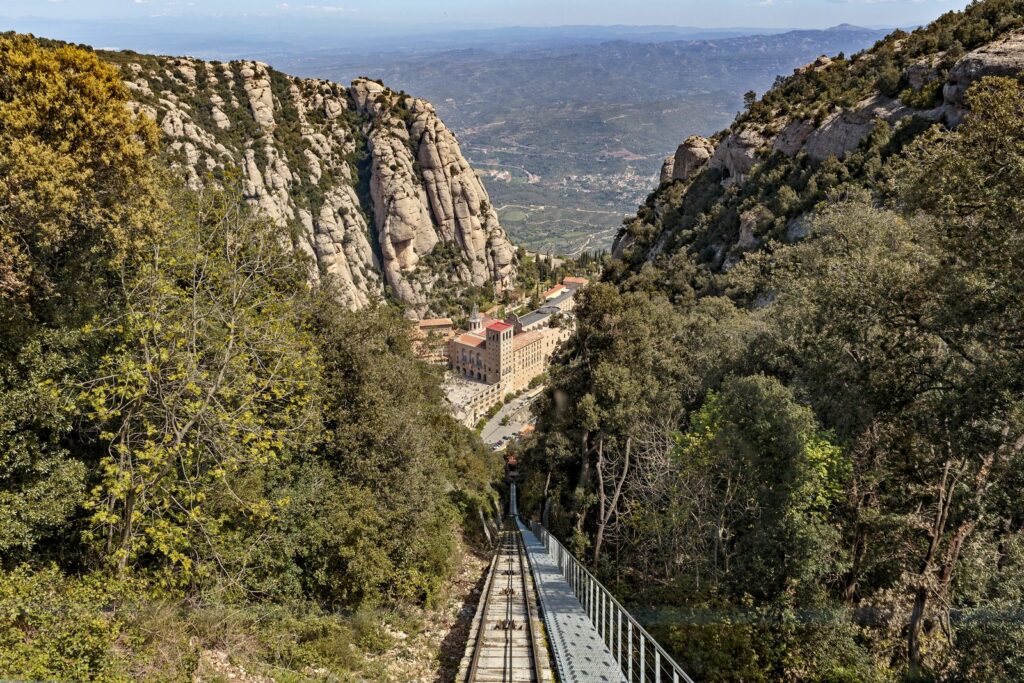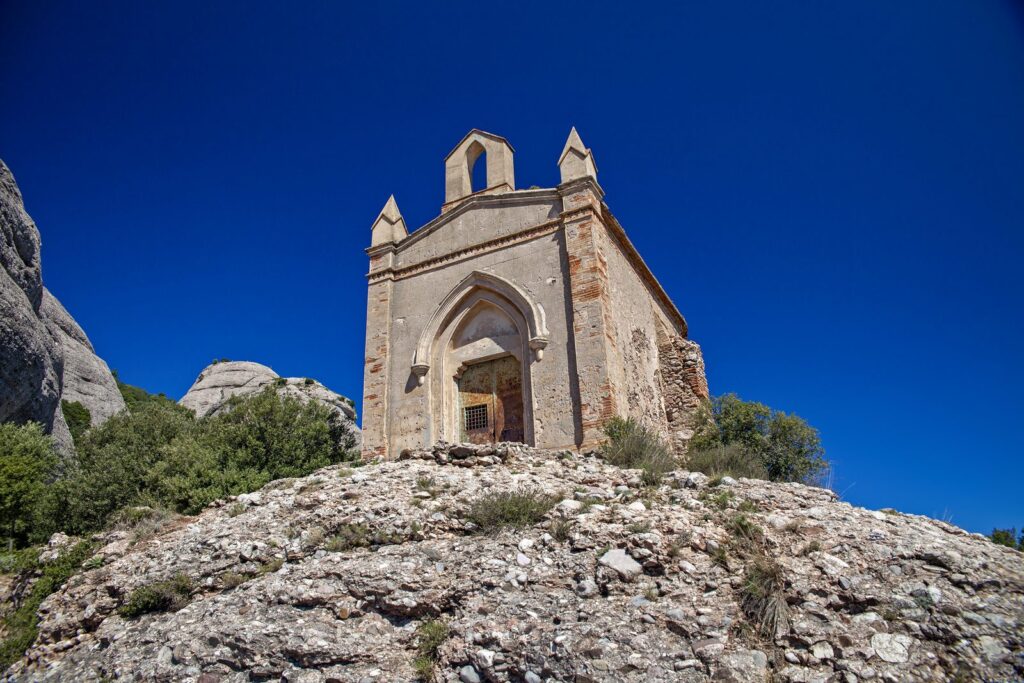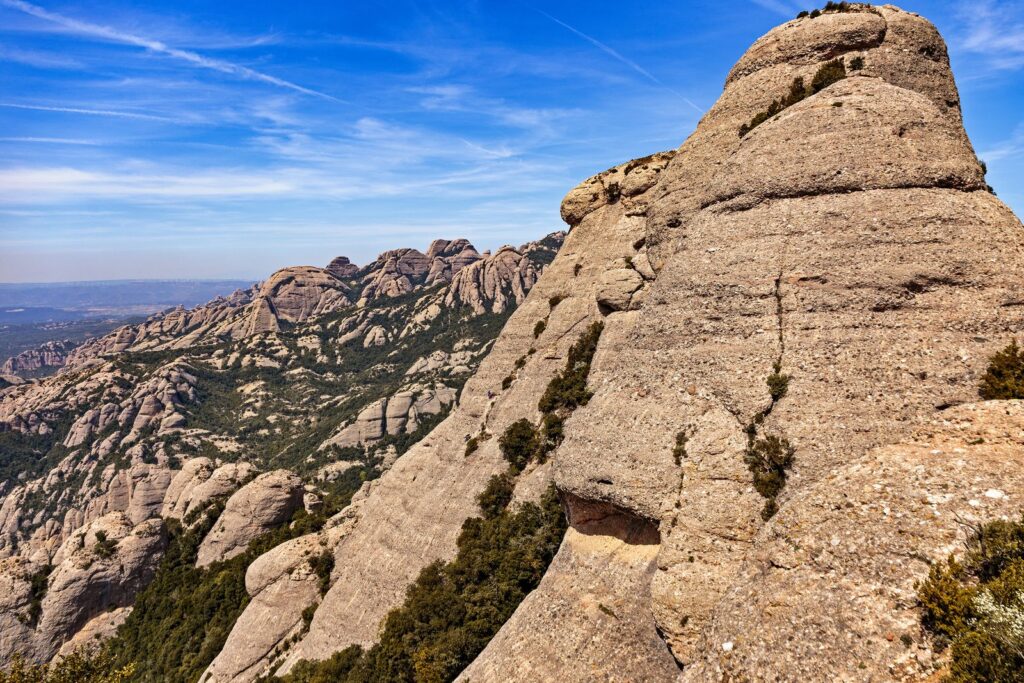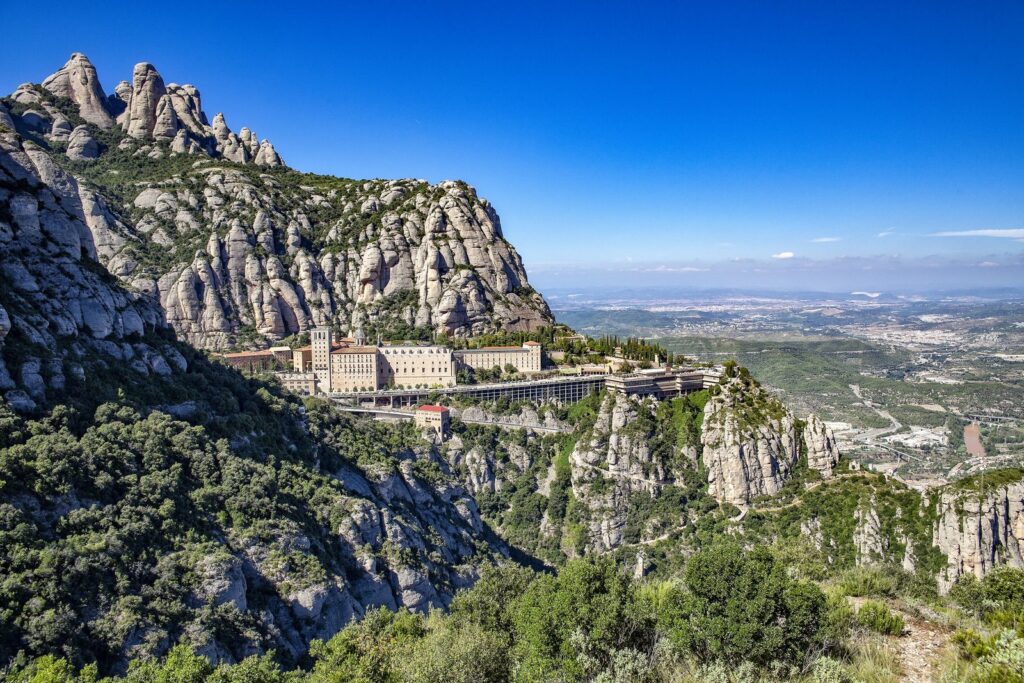Montserrat is a sacred mountain for all Catalans. This is the place where the main shrine of all Catalonia is located in the monastery of the same name – the “black” Madonna (La Moreneta), fulfilling your wishes. To do this, you just need to turn to her and rub the ball in her right hand – a symbol of space, a symbol of creation.
In addition, this is also a very picturesque natural park, abounding with hiking trails of varying difficulty.
Translated from Catalan, Montserrat means “carved mountain”. According to legend, the angels who descended to the ground decided to frolic a little and diversify the monotonous surrounding landscape, carving intricate figures from the local mountain range. Indeed, Montserrat mountain is difficult to confuse with anything; on a fine, clear day, its imposing monumental outlines are clearly visible from a great distance.
We invite you to take a short virtual walk to Montserrat.
***
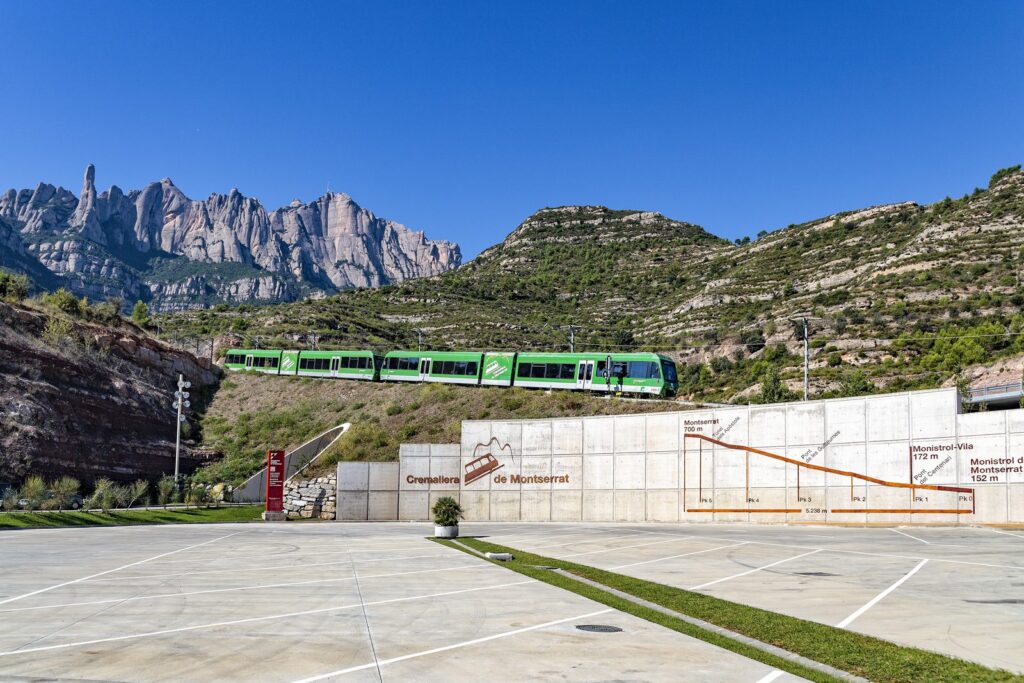 You can get to Montserrat by car, by funicular and by the cogwheel train. If you are seasick on the slopes, or if you are traveling with children, we recommend the cogwheel train. Slowly climbing the mountain, the train will take you to the monastery in 15 minutes, and you will have time to enjoy the views.
You can get to Montserrat by car, by funicular and by the cogwheel train. If you are seasick on the slopes, or if you are traveling with children, we recommend the cogwheel train. Slowly climbing the mountain, the train will take you to the monastery in 15 minutes, and you will have time to enjoy the views.***
***
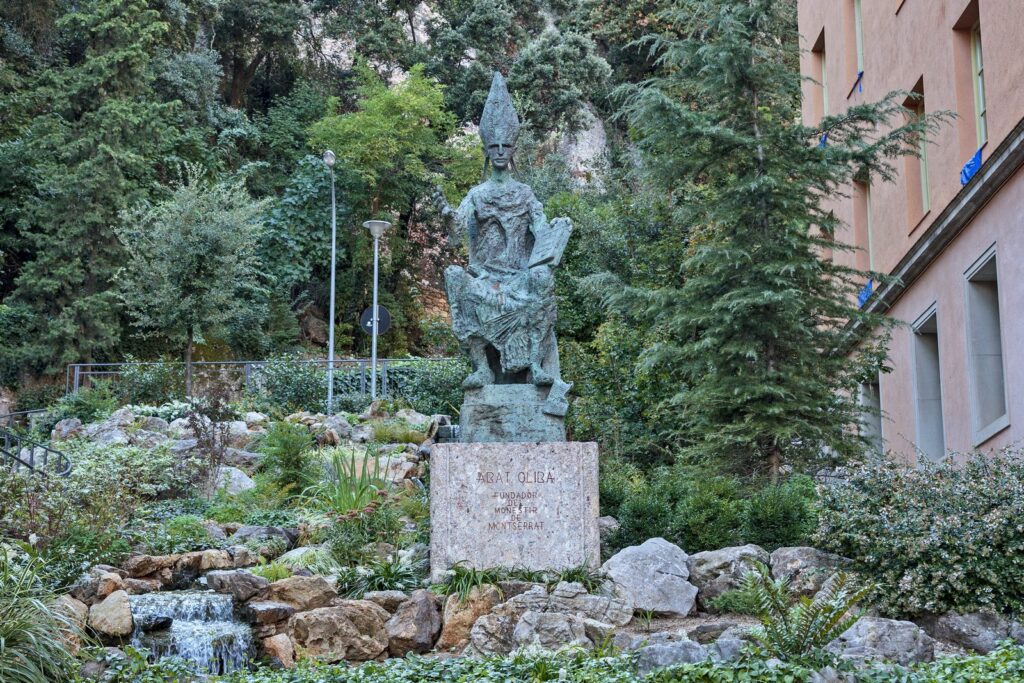 According to history, in 880, local shepherds, attracted by the bright light and beautiful melody emanating from the depths of a small cave, discovered in it an unusual image of the Virgin Mary, made of ebony. In honor of this event, a small hermitage was built near the place of the miraculous acquisition of the image of the Madonna. In the photo there is a monument to Abbot Oliva, who founded the Montserrat monastery here in 1025. The monument was seriously damaged during the war with Napoleon – the French soldiers practiced shooting at the monument just to keep themselves occupied.
According to history, in 880, local shepherds, attracted by the bright light and beautiful melody emanating from the depths of a small cave, discovered in it an unusual image of the Virgin Mary, made of ebony. In honor of this event, a small hermitage was built near the place of the miraculous acquisition of the image of the Madonna. In the photo there is a monument to Abbot Oliva, who founded the Montserrat monastery here in 1025. The monument was seriously damaged during the war with Napoleon – the French soldiers practiced shooting at the monument just to keep themselves occupied.***
***
***
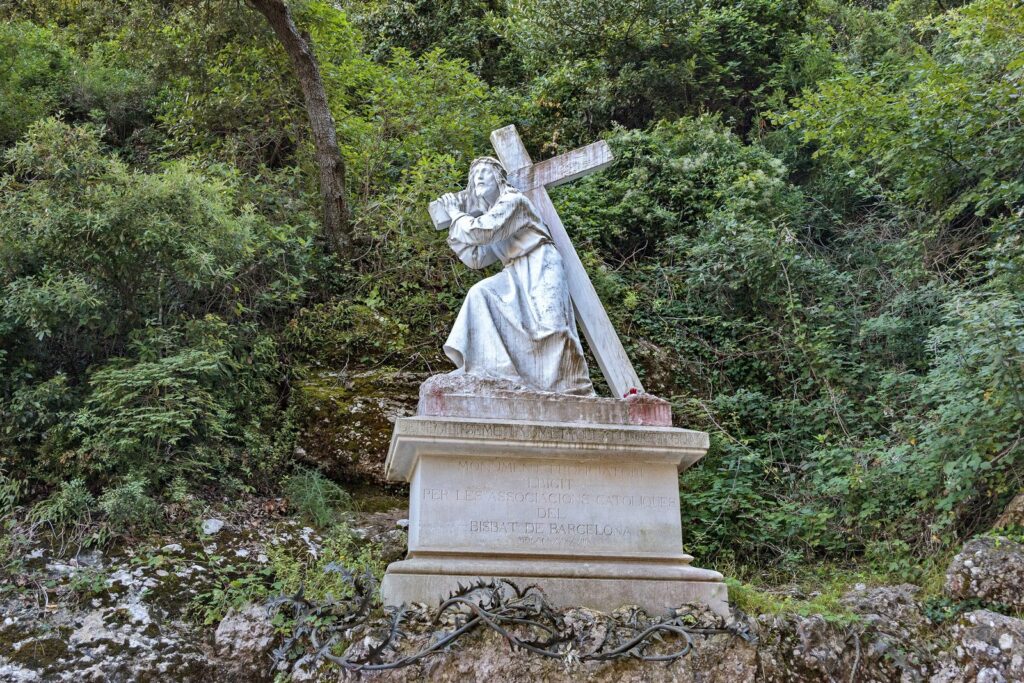 There are two funicular stations next to the cogwheel train station. One of them, the Santa Cova funicular, leads down to the base of the trail leading to the very cave where the image of the “black” Madonna was discovered. Along the trail, called the Rosario Monumental de Montserrat, there are numerous statues depicting the path of Christ from birth to the ascent of Calvary. Pictured is a sculpture called Cuarto Misterio de Dolor (the fourth mystery of pain), by sculptors Joan Martorell and Venancio Vallmitjana, 1899.
There are two funicular stations next to the cogwheel train station. One of them, the Santa Cova funicular, leads down to the base of the trail leading to the very cave where the image of the “black” Madonna was discovered. Along the trail, called the Rosario Monumental de Montserrat, there are numerous statues depicting the path of Christ from birth to the ascent of Calvary. Pictured is a sculpture called Cuarto Misterio de Dolor (the fourth mystery of pain), by sculptors Joan Martorell and Venancio Vallmitjana, 1899.***
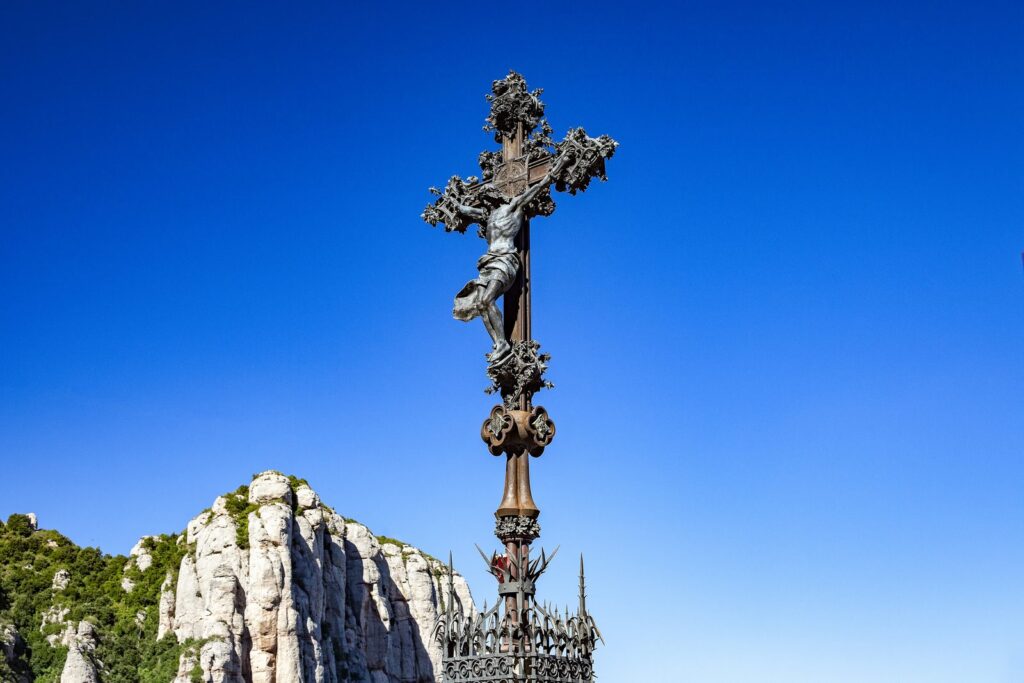 Sculpture Quinto Misterio de Dolor. La Crucifixión de Jesús (Fifth mystery of pain. Crucifixion of Christ). Architect Josep Puig i Cadafalch, sculptor Josep Llimona, 1896.
Sculpture Quinto Misterio de Dolor. La Crucifixión de Jesús (Fifth mystery of pain. Crucifixion of Christ). Architect Josep Puig i Cadafalch, sculptor Josep Llimona, 1896.***
***
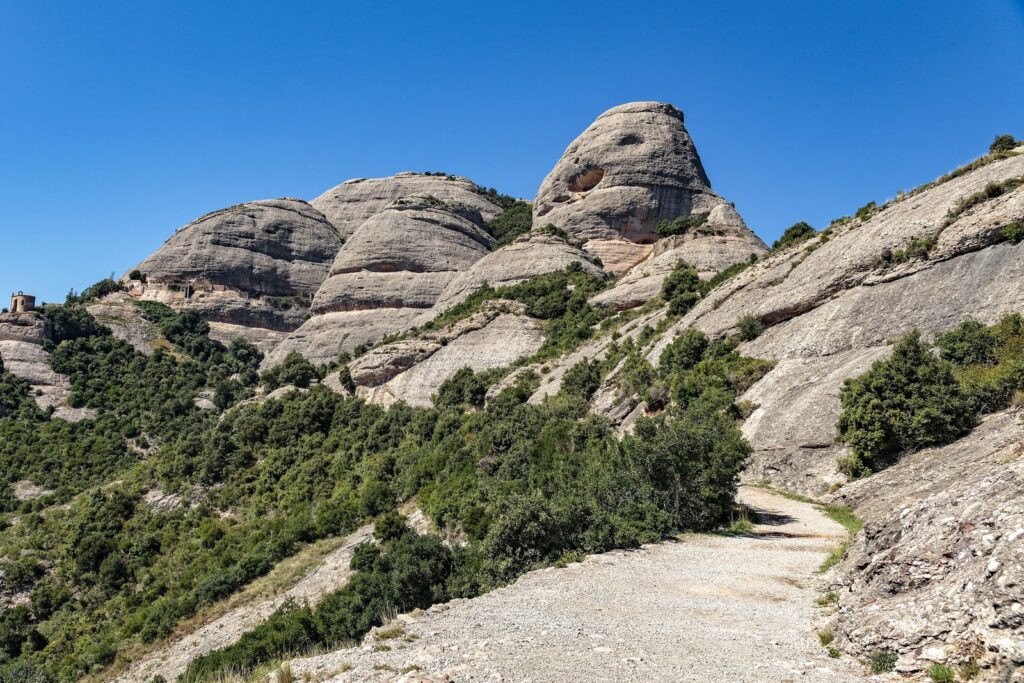 Three hiking trails start at the funicular station, you can choose the one that suits you in terms of distance and duration. We are going along the path leading up to the mountain peaks.
Three hiking trails start at the funicular station, you can choose the one that suits you in terms of distance and duration. We are going along the path leading up to the mountain peaks.***
***
***
***
 The most desperate climbers, in search of thrills and the most beautiful views, climb such peaks, where an ordinary person cannot get without special equipment.
The most desperate climbers, in search of thrills and the most beautiful views, climb such peaks, where an ordinary person cannot get without special equipment.***
 Once again we admire the incredible work of angels – skillful stone carvers, and set off on our way back.
Once again we admire the incredible work of angels – skillful stone carvers, and set off on our way back.***
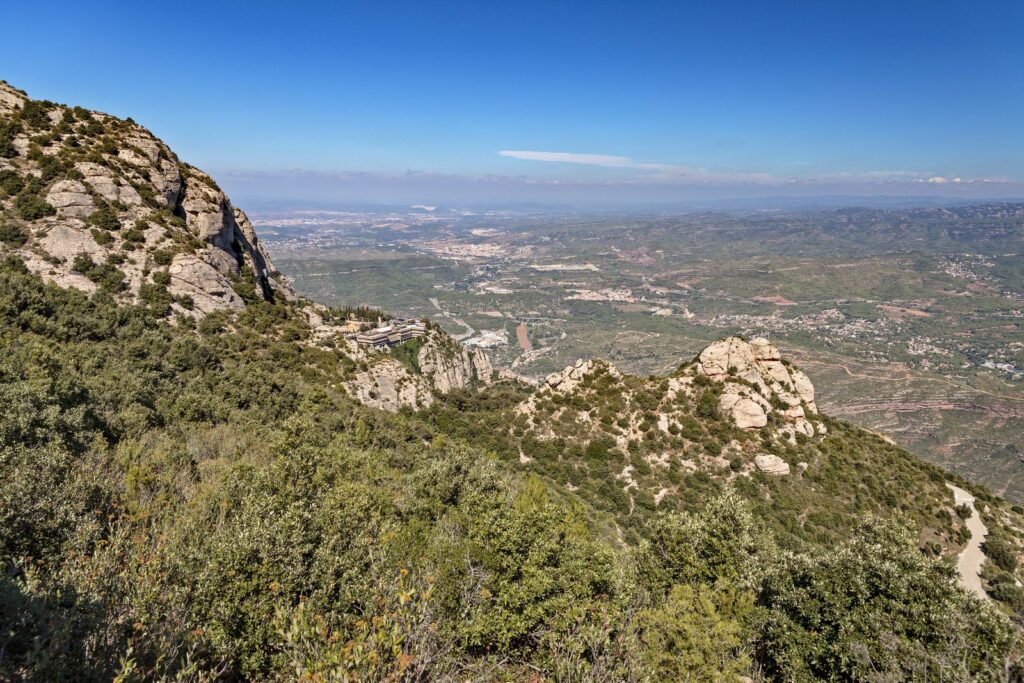 No matter how huge the Montserrat Monastery may seem, it is just a tiny dot on the surface of the majestic mountain range.
No matter how huge the Montserrat Monastery may seem, it is just a tiny dot on the surface of the majestic mountain range.***
***
Useful information for planning a trip to Montserrat mountain, as well as a more detailed photo report, can be found in our blog following the link.

 Русский
Русский
 Français
Français
 Español
Español
 English
English
 Català
Català
